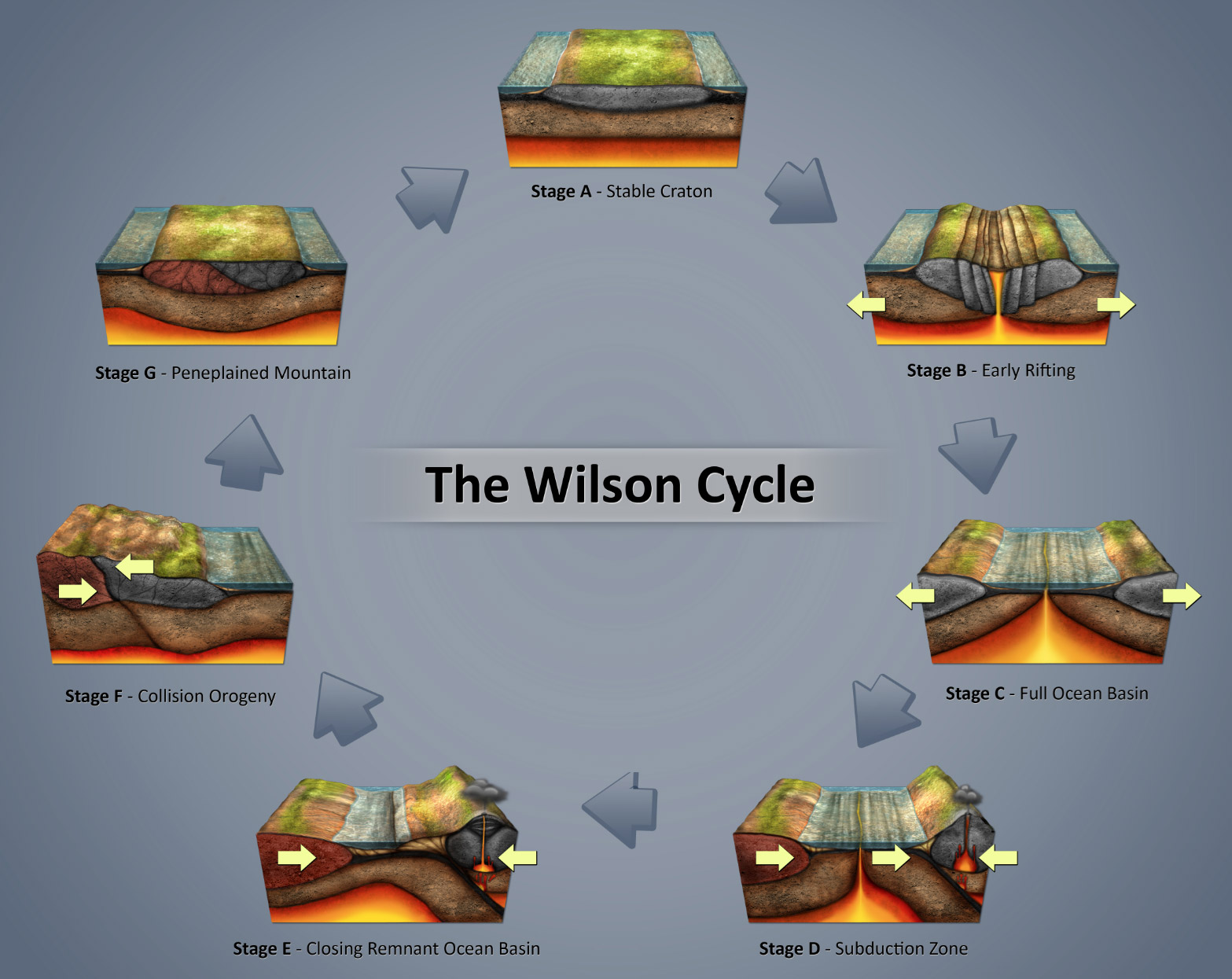Parts of Western and Central Australia were in the northern hemisphere when Rodinia was formed, but much of Australia as we know it already existed in the southern regions of Pangaea. Continental drift over long periods of time has help explain this crossing of the hemispheres.

The cycle is as follows:
- A stable cration (geologically stable region) begins rifting and pulling apart (African Rift valley)
- Over time the extent of rifting allows for the ocean to flood in. Two new continents are made (South America and Africa, separated by the Atlantic Ocean)
- Eventually the denser oceanic lithosphere begins to get pushed under the continental lithosphere, causing a subduction zone to form.
- As the subduction continues, an accretionary wedge and volcanic activity add land to this area. The gap between the continents decreases.
- Eventually the 2 continents collide, forming fold mountains. Eventally motion stops.
- Erosion flattens the mountain and the craton becomes stabilised.
No comments:
Post a Comment